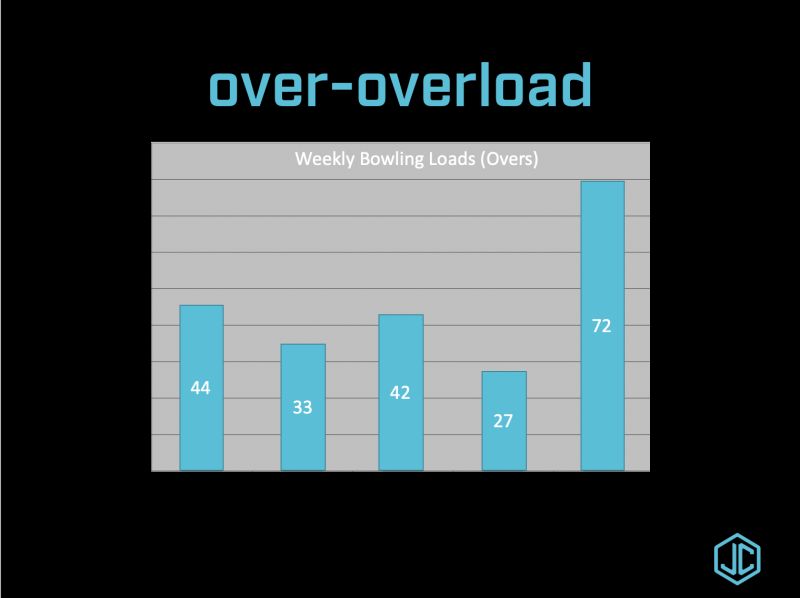
Do you monitor workload of your athletes, in the gym, during on-field training and/or game day? Previously intimated as part of SPOT that it was important that you somehow monitor the loading of your athletes/players. Overloading too much (over-overloading) or not enough (under loading) are usually recipes for injury.
Case in point is the bar graph on the slide, which was of a cricket fast bowler who had a national selector arrive in region and wanted to see him bowl. As you can see there is an abrupt workload spike and 20 days later this athlete suffered a lumbar stress fracture.
Workload monitoring has become a science and there are stacks of ideas out there how to use the information from “top ups” after games or training for those who haven’t achieved the required workload, to offloading in some manner for those who have done too much.
The monitoring doesn’t need to be complicated as the frequency count in the example shows or monitoring reps, sets and/or tonnage lifted in the gym. Quite often amore macro approach is needed. I mention this in my next post in relation to what I believe is one of the most at risk populations.